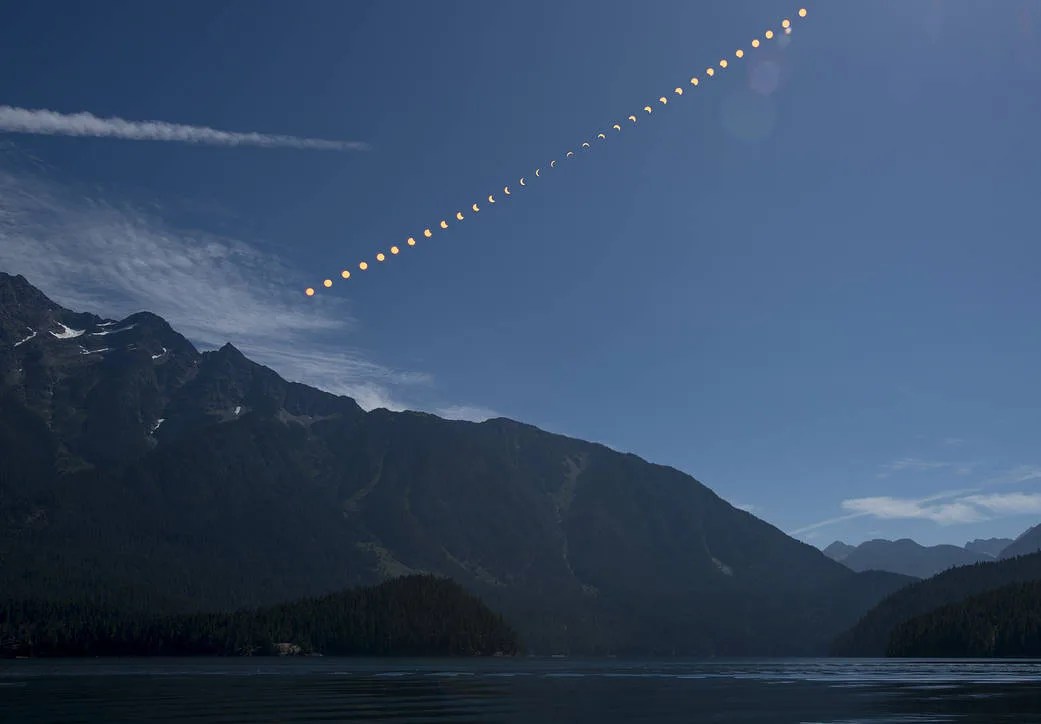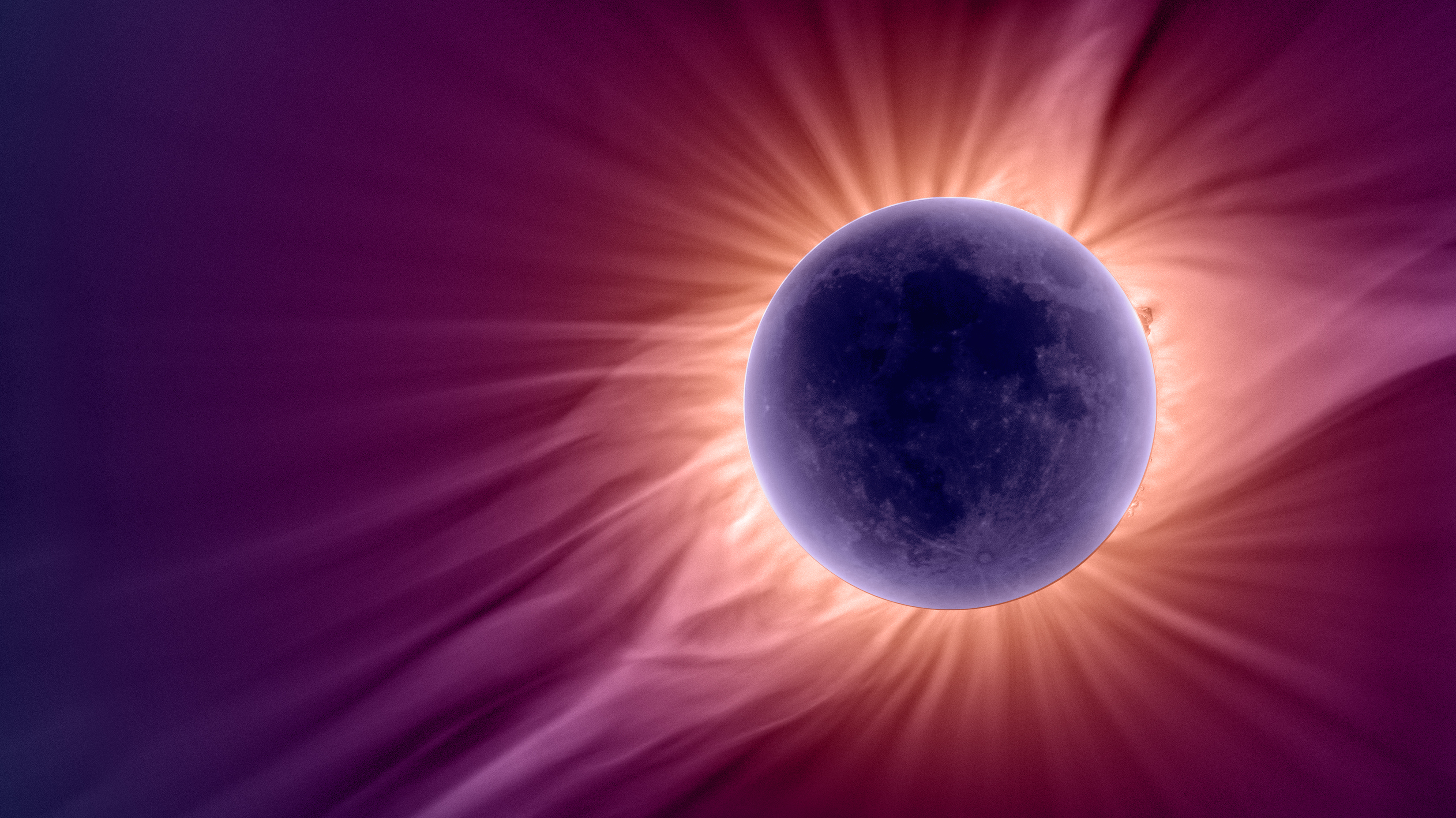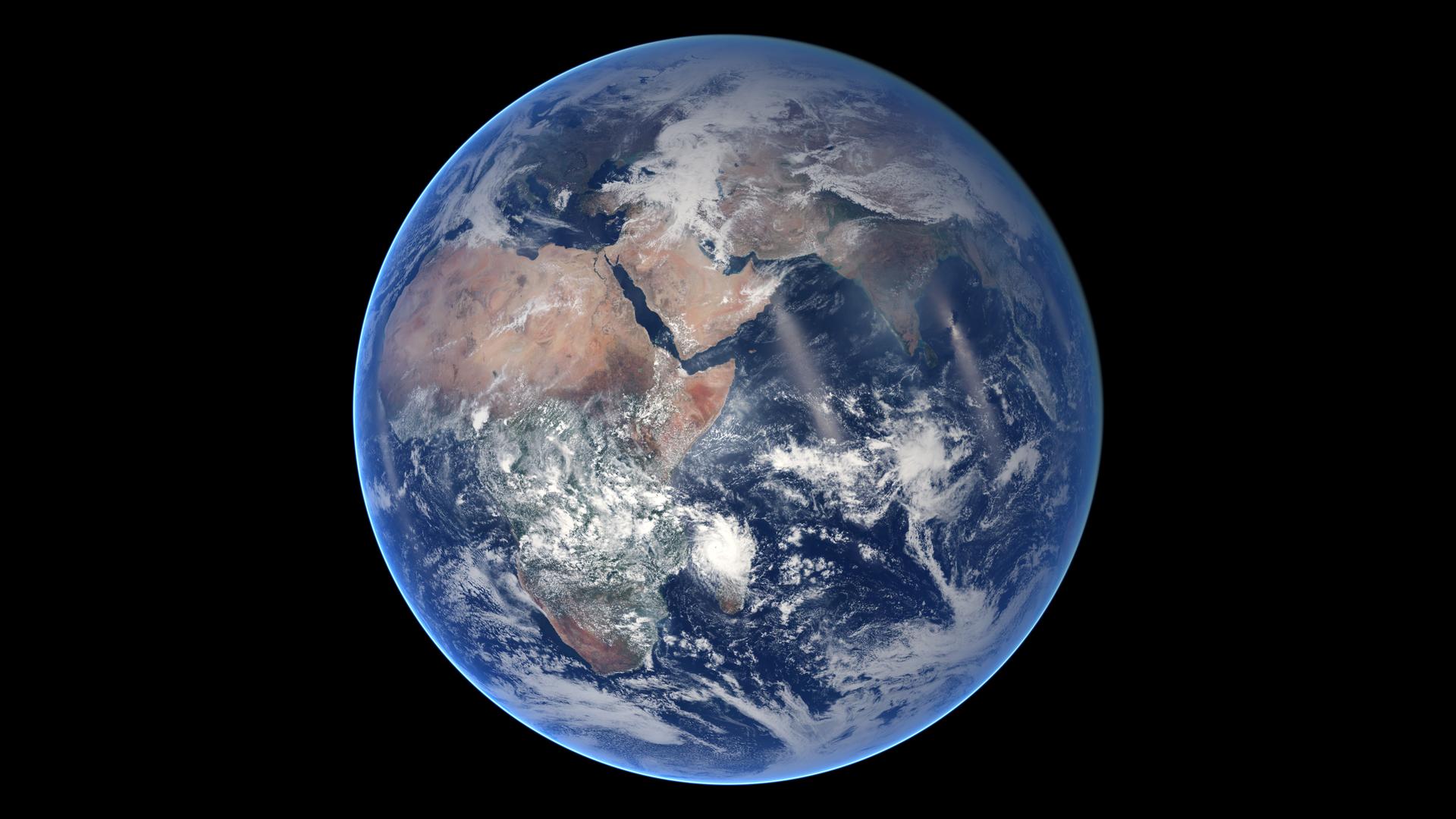Eclipses have been occurring on Earth since long before humans walked the planet. Throughout time, humans have had different interpretations of and reactions to these striking celestial events.

The oldest recorded eclipse in human history may have been on Nov. 30, 3340 B.C.E. A series of spiral-shaped and circular petroglyphs was found at the Loughcrew Megalithic Monument in County Meath, Ireland. Petroglyphs are rock carvings made by pecking into stone. Immediately in front of a carving that shows overlapping, concentric circles, archaeologists found the charred remains of nearly 50 individuals. Scholars continue to research and discuss the meaning of the petroglyphs.
Around 1200 B.C.E., scribes in Anyang, China, recorded eclipses on oxen shoulder blades and tortoise shells, called oracle bones. In these eclipse records, the scribes said, “The Sun has been eaten.” More than 3,000 years after these records were created, in the 1980s and 1990s C.E., a team of astronomers at NASA’s Jet Propulsion Laboratory studied these eclipse records to research changes in Earth’s rotation. Determining exactly when the eclipse was seen and where the Moon's shadow fell on Earth helped them calculate the rate of Earth's spin. The eclipses they used for this research were in 1226 B.C.E., 1198 B.C.E., 1172 B.C.E., 1163 B.C.E., and 1161 B.C.E. If Earth were rotating at the same speed it is now, these eclipses would have occurred thousands of miles from Anyang. Since we know they occurred in Anyang, the scientists concluded that Earth’s rotation had slowed by 47-thousandths of a second per day in the past 3,200 years.
Eclipses also appear in religious texts. Christian texts mention that the Moon turned to blood after Jesus’s crucifixion – potentially referring to a lunar eclipse, during which the Moon takes on a reddish hue. Using this textual source, scholars narrowed down a possible date of crucifixion to Friday, April 3, 33 C.E. because a lunar eclipse occurred that day. In the Quran, a solar eclipse is mentioned before the birth of Mohammed as well as on the day his son, Ibrahim, passed.
The Maya kept meticulous records of astronomical events, documented in hieroglyphs carved in stone, painted on pottery and murals, and written on accordion-folded bark books called codices. The Maya astronomical record includes documentation of eclipses. In their book “Astronomy in the Maya Codices,” Harvey and Victoria Bricker demonstrated that the Maya predicted the solar eclipse of July 1991. Knowledge of astronomy as applied to traditional agriculture, the curation of Maya calendars, and ceremonial practices continues through the oral tradition in many Maya communities in Mesoamerica today.

At Chaco Canyon in New Mexico, a petroglyph carved into the rockface by early Pueblo people may represent an eclipse that occurred there on July 11, 1097. The petroglyph has a swirling loop jetting off the side – perhaps representing a coronal mass ejection from the Sun. NASA studies coronal mass ejections now using spacecraft that mimic the view seen from Earth during eclipses. There are many petroglyphs at Chaco Canyon, which provide important clues about how Ancestral Puebloans studied the Sun. The many Indigenous groups in North America have a variety of interpretations of eclipses, developed throughout history. This video from the Indigenous Education Institute shares more about these experiences:
Eclipses have contributed to major advances in the history of science. Albert Einstein first proposed his theory of general relativity in 1916. However, it wasn’t until 1919 that results from an eclipse science expedition led by Sir Arthur Eddington validated the theory – and Einstein rose to fame. Einstein hypothesized that gravity is a warping of time and space, distorting the fabric of the universe. A large object – like the Sun – can distort spacetime enough that its gravity could bend light. So, during the eclipse on May 29, 1919, scientists saw that some stars appeared in the wrong place – showing evidence of Einstein’s theory.
In August 2017, an eclipse crossed the United States, from Oregon to South Carolina. The path of totality crossed 14 states. This was the first total solar eclipse visible in the contiguous U.S. in 38 years and approximately two-thirds of the U.S. population lived within a day's drive of totality.
A collection of 11 spacecraft from NASA and partner organizations – the National Oceanic and Atmospheric Administration (NOAA), the Japanese Aerospace Exploration Agency (JAXA), and the European Space Agency (ESA) – provided observations of the Sun, the Moon, and Earth during the eclipse. In addition, NASA provided a Gulfstream-III and two WB-57 aircraft for high-altitude observations. The International Space Station provided space-based photographs of the eclipse shadow moving across the United States. Many citizen scientists also participated in the eclipse, through programs including an eclipse ballooning project with the Montana Space Grant Consortium, the Citizen CATE telescope program, and several mobile apps. Learn more about the science of the eclipse here.

This country-wide celestial event was supported by many government agencies in addition to NASA, such as the U.S. Fish and Wildlife Service, National Park Service, NOAA, and the Department of Transportation. It is estimated that around 215 million Americans viewed that eclipse: 61 million saw it electronically and 154 million stepped outside to see it with their own eyes.
People in the United States will have the chance to experience solar eclipses again with a total solar eclipse on April 8, 2024, which provides unique opportunities for science, education, and exploration.
Dr. Isabel Hawkins, an astronomer at the Exploratorium, and Alonso Mendez, an archaeoastronomer at the Maya Exploration Center, provided invaluable information, fact checking, and edits to information about Maya and eclipses on this page. We thank them for their contributions.





